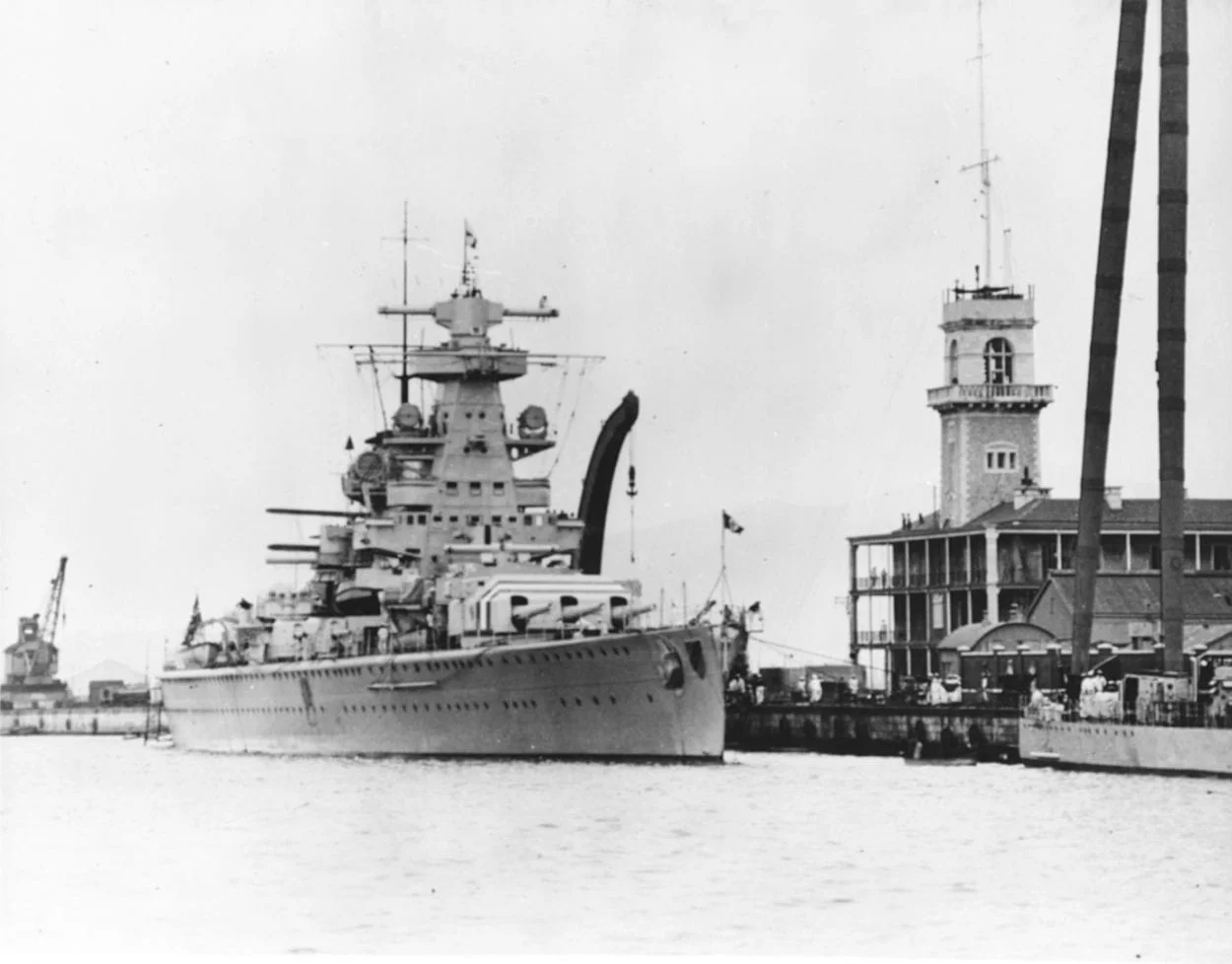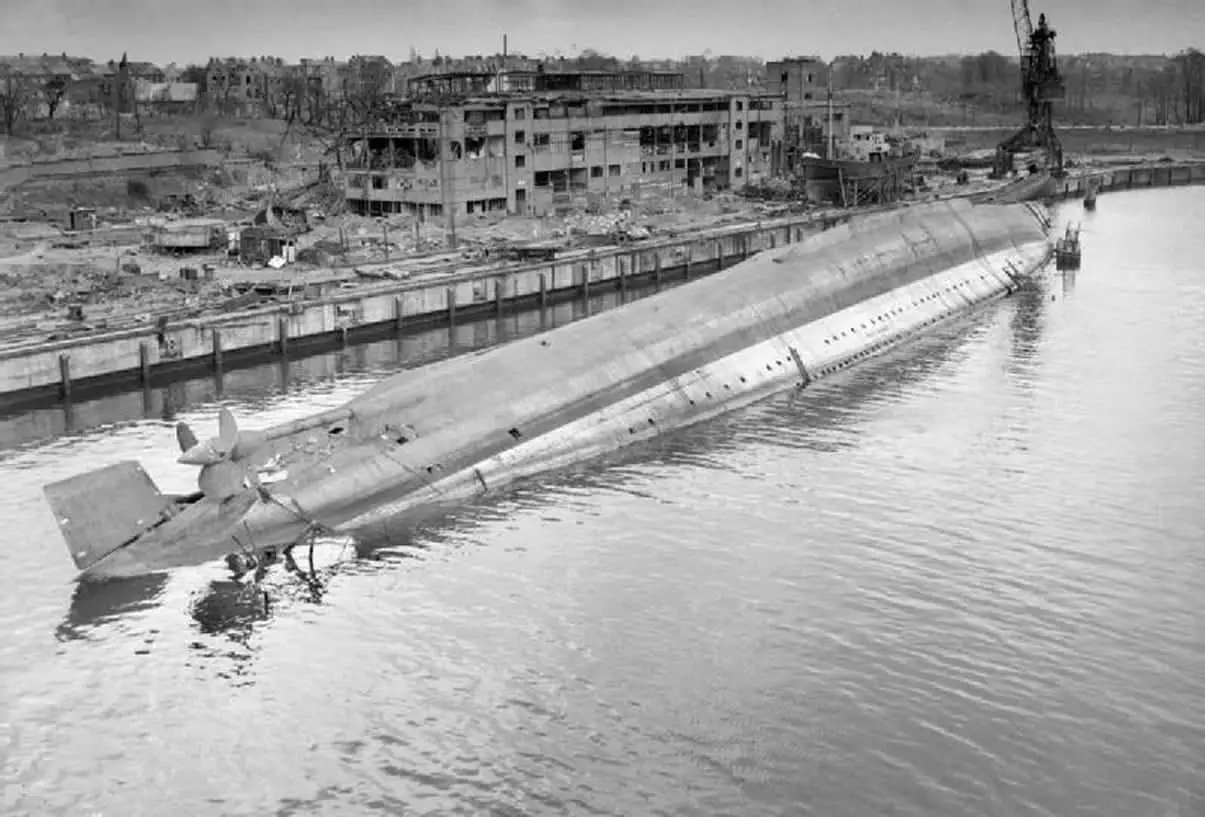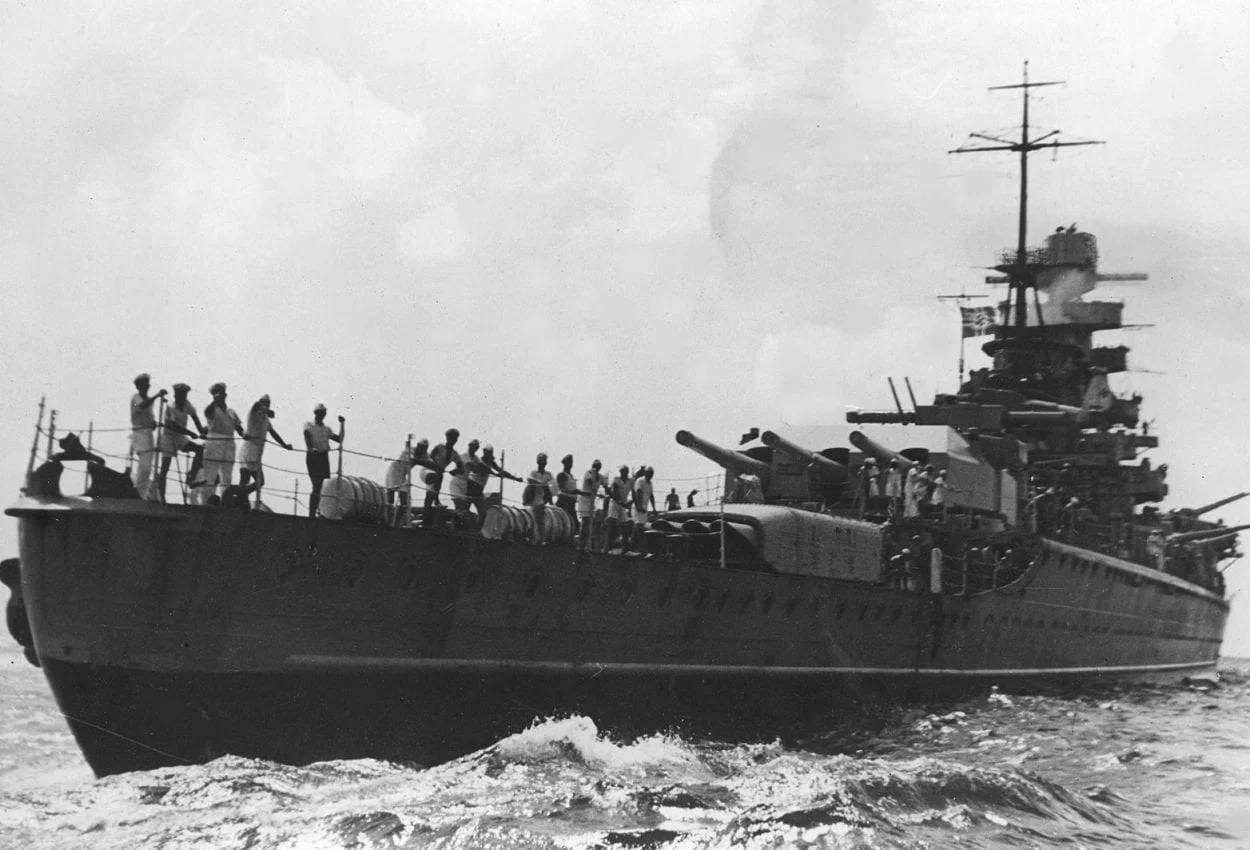The Admiral Scheer, named after Admiral Carl Friedrich Heinrich Reinhard Scheer was a Deutschland-class heavy cruiser, often termed “pocket battleships” by the British, that served in the Kriegsmarine navy of Nazi Germany during the Second World War.
The Deutschland class was a series of three Panzerschiffe (armored ships), consisting of the Deutschland, the Admiral Graf Spee, and the Admiral Scheer.
The Treaty of Versailles limited the tonnage of the Admiral Scheer to nominally under 10,000 long tons (although the ship was actually 13,660 long tons), but armed with six 11-inch SK C/28 guns in two triple turrets, and eight 5.9 inch SK C/28 guns in single turrets, the ship had a final load displacement of 15,180 long tons.
The ships of the Deutschland class were designed to be swift predatory hunters, able to reach top speeds of 28 knots with an all-diesel propulsion system, and outgun many cruisers of the Anglo-French navies.

The Admiral Scheer was launched on the 1st of April 1933 and commissioned in 1934, where the ship was placed under the command of Captain Wilhelm Marschall who conducted training and sea trials for the remainder of the year.
The ship was first deployed during the Spanish Civil War, where its duties consisted of evacuating German civilians and patrolling Spanish coastline to control the influx of war materiel into Spain. After the sister cruiser Deutschland was attacked by the Spanish Republican Air Force in 1937, the Admiral Scheel saw its first military action and opened fire on shore batteries, naval installations, and ships in the Republican-held port of Almeria.
After the outbreak of WW2, Admiral Scheer underwent a refit and was despatched to the Atlantic to commence commerce raiding operations against merchant shipping. In the course of her raiding operation, she had steamed over 46,000 nautical miles and sunk seventeen merchant ships for a total of 113,223 GRT.

The Admiral Scheer was involved in several further operations during the war in Norway and the Baltic, but by 1945 the ships guns were badly worn and in need of repair. The Admiral Scheer arrived in the German port city of Kiel that same year to have the stern turret guns replaced, but during the refit the port was bombed by 300 RAF bombers, resulting in several bombs striking the Admiral Scheer causing her to capsize.
After the war, the Admiral Scheer was partially broken up, but the sheer size of the ship’s hull was too immense for the post-war government to financially warrant the endeavour of completely salvaging the wrecked husk. The ports inner harbours was filled in with material from the bombed-out ruins of Kiel, burying the Admiral Scheer beneath rubble and debris, where she still lays at rest today beneath the Ellerbrek district of Kiel.
Location of the buried remains of the Admiral Scheer:
Header Image – The Admiral Sheer – Image Credit : Public Domain







